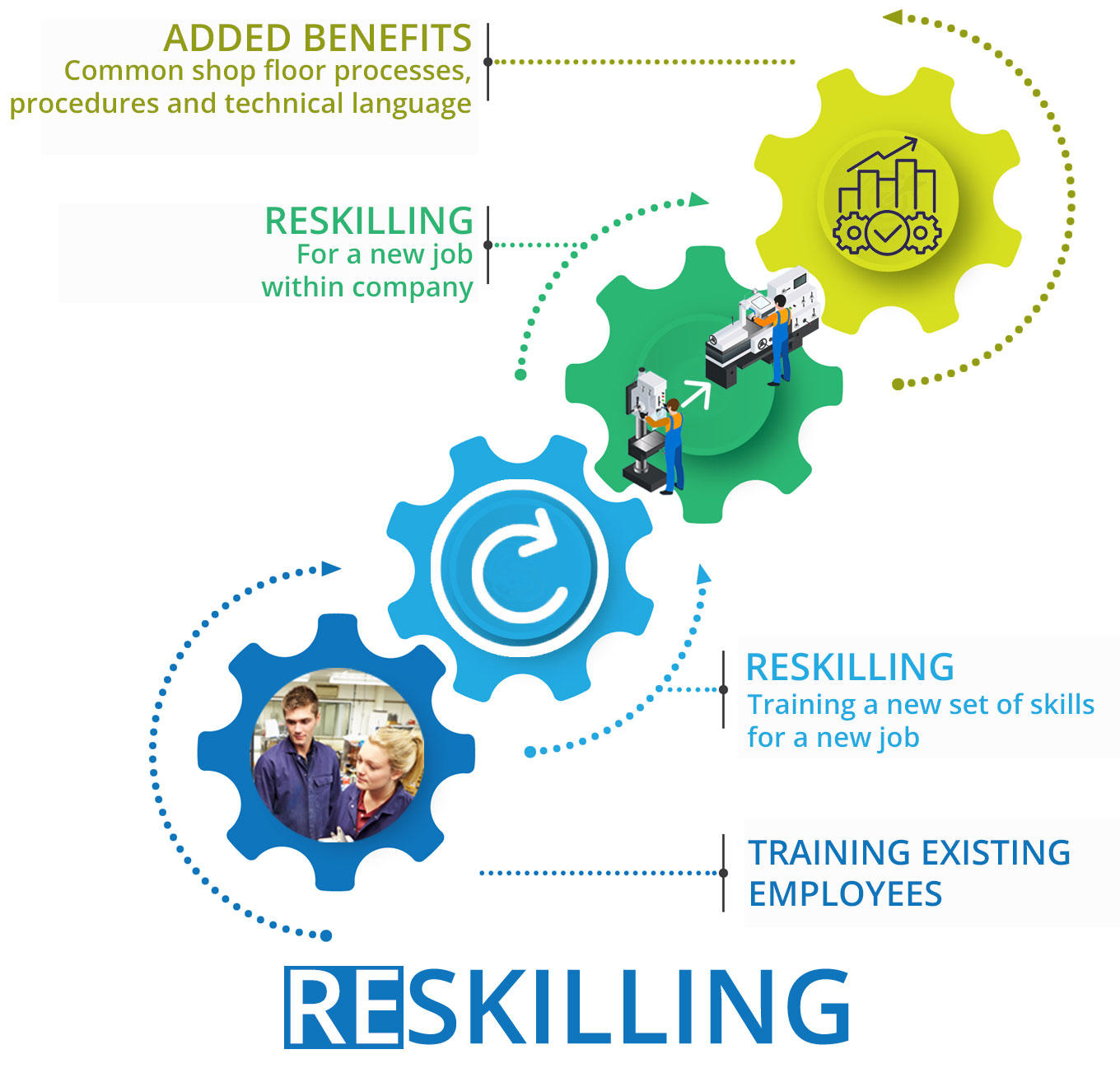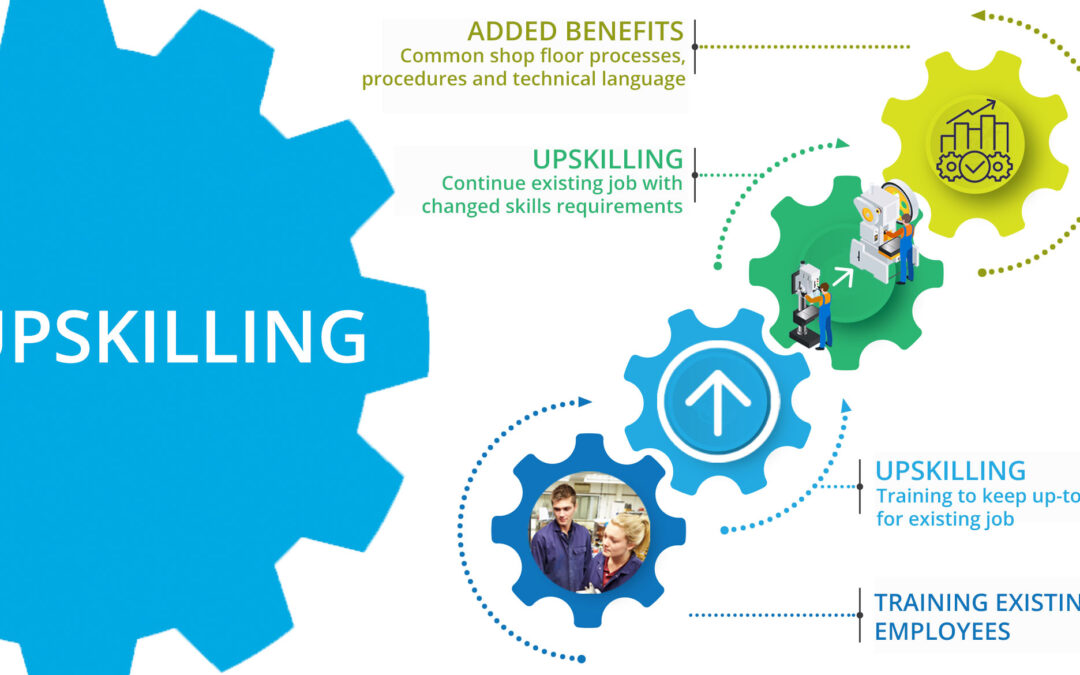Upskilling or reskilling is happening daily across the country as organizations seek to narrow the skills gap. But surprisingly, it appears that many businesses do little in terms of tracking such an important component of their training strategy, resulting in an inability to make evidence-based decisions around workforce training.
Leveraging some data collection capabilities, employers could potentially make better utilization of their staffing requirements and their training needs. They could ask themselves:
- How many employees working in their current job would realize a performance improvement with additional training?
- How many employees could be moved to a more complex job with additional training?
- How many employees could move into a different job with comparable complexity with additional training?
By answering these questions, could employers potentially make more informed decisions about their staffing and training mix? Would government policy makers be better informed if they had more relevant data on actual upskilling and reskilling requirements? We think so.
What is Upskilling and Reskilling?
It’s useful to have a baseline understanding of the two terms ‘upskilling’ and ‘reskilling’.
Upskilling: Training existing employees to meet the changing skill requirements for their existing job.
Reskilling: Training existing employees with a new set of skills for a new job within the company.
Upskilling is often the terminology used when hiring new employees who lack direct work experience in their new job.
“These definitions are typically used to define training for existing employees, but they also can be used for new employees,” says Morley Gunderson, a Canadian labour economist and Professor Emeritus at the Centre for Industrial Relations and Human Resources, University of Toronto. “There are no hard and fast definitions in the literature out there.”
 Work Based Learning Consortium (WBLC) discovered some companies have a broader view of upskilling.
Work Based Learning Consortium (WBLC) discovered some companies have a broader view of upskilling.
“Many of the employers we work with had a broader definition of upskilling,” says Wayne Lamon, Director, Programs, WBLC. “They consider upskilling to include training existing employees already in a specific position, as well as the new hires.”
Lamon explains that several employers, who had hired a large number of new employees at one time, wanted to ensure these new employees all achieved a specific level of competency. But they also wanted existing staff (not just the newly hired employees) in a specific job, such as CNC machinists, to receive that same training.
“This ensures that everyone learns and uses the same processes and terminology on the job, whether they are a new hire or an existing employee,” adds Lamon. “It’s tremendously beneficial and many of these employers noted that our upskilling training led to a strong uptick in efficiency and productivity across the board.”
The Information Gap Around Upskilling/Reskilling
While it is assumed that there is a lot of upskilling and reskilling occurring, WBLC discovered that few companies track it with any thoroughness.“
If you’re a policy maker or a corporate executive and trying to sort through the challenges of the skills gap, you’ll likely be surprised to learn that there is no valid data source available for upskilling,” says Lamon. Further he goes on to say – “How much upskilling is being undertaken by employers? What assistance is required around upskilling? How much upskilling work is being undertaken by employers on their own?”
There’s an information gap that currently exists. Lamon believes WBLC has a solution to address this knowledge gap.
Creating an Upskilling Database for Industry and Government
As a result, WBLC has engaged with Future Skills Centre (a Government of Canada initiative dedicated to helping Canadians gain the skills needed to thrive in today’s changing labour market) to build a conceptual upskilling data collection system and work with some Canadian companies on a trial application of that system.
The first step was to conduct research around upskilling. This involved looking at the definitions of upskilling and reskilling. It also involved looking at what type of information is available to help companies and policy makers with decision making regarding upskilling and reskilling. WBLC also researched trends around upskilling and reskilling.There was a surprising amount of information about upskills/reskilling, but very little in the form of data.
| “If I’m an employer with an internal skills challenge and I’m facing the great resignation after the pandemic, I need to know what’s happening in the general market. For those in the industry, finding the right information is likely to prove challenging,” – Canadian labour economist and Professor Emeritus at the Centre for Industrial Relations and Human Resources, University of Toronto |
“If I’m an employer with an internal skills challenge and I’m facing the great resignation after the pandemic, I need to know what’s happening in the general market. For those in the industry, finding the right information is likely to prove challenging,” says Gunderson, who conducted the research elements of this project. “The real problem is ‘sorting the wheat from the chaff’, or as we say more formally in the statistical analysis, ‘finding the signal given the noise’ that’s out there.”
The second step was to build a data collection system, which WBLC recently completed.
WBLC also has identified an industry group to pilot and test the system, which will include working with Linamar of Guelph and the Canadian Association of Mold Makers (CAMM) member companies.
“We’re just about to launch this aspect of the project and it will be fascinating to see the results,” says Lamon. “We believe employers and policy makers within government could really benefit from this new type of information.”
Benefits of data tracking
Lastly, Lamon explains that tracking upskilling and reskilling data could potentially lead to better informed, evidence-based decisions.
For example, by evaluating the data, executives at a trade association could verify at a glance that while there are 2,000 vacancies for a particular position within the industry, there also are an additional 3,000 people already employed in that role who require upskilling.
“Equipped with this information, industry can potentially reach out to government to talk about how they could collaborate to address the issue and government policy makers will have a clearer understanding of the whole picture because data would now exist to support decision making,” adds Lamon.

